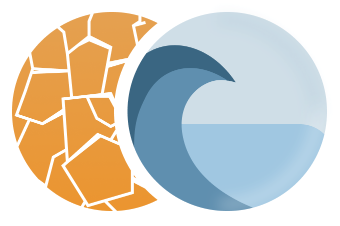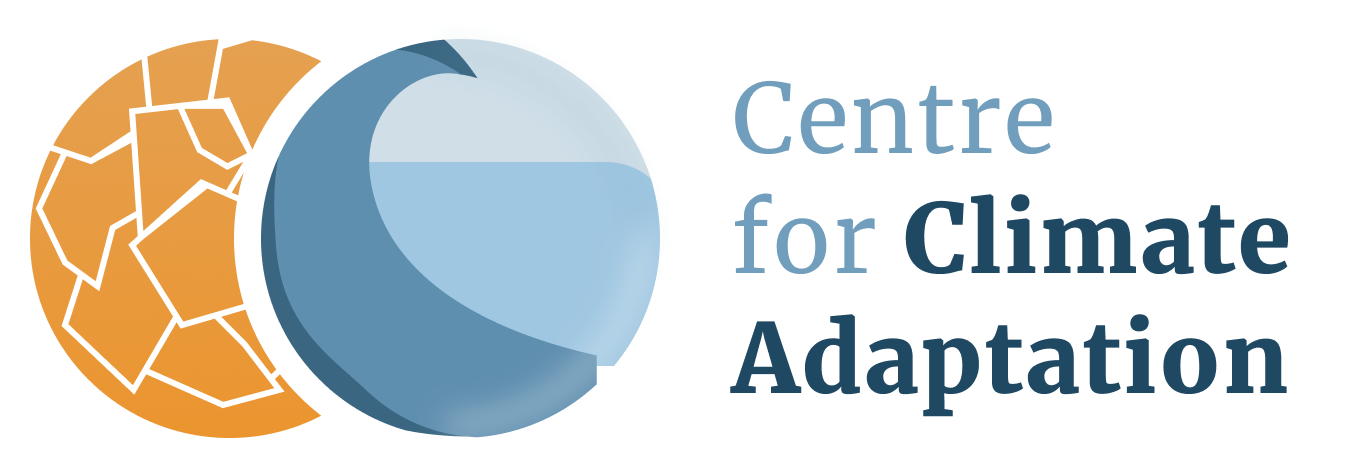Sweden
Permafrost
Indicator of global warming
The permafrost regions occupy approximately 24% of the terrestrial surface of the Northern Hemisphere (9). Permafrost is also extensive in such mid-latitude mountain ranges as the Rockies, Andes, Alps, and Himalayas. Two classes of frozen ground are generally distinguished: seasonally frozen ground, which freezes and thaws on an annual basis, and perennially frozen ground (permafrost), defined as any subsurface material that remains at or below 0ºC continuously for at least two consecutive years (10).
Permafrost thicknesses range from very thin layers only a few centimeters thick to about 1500 m in unglaciated areas of Siberia (11).
Because permafrost is highly susceptible to long-term warming, it has been designated a “geoindicator,” to be used as a primary tool for monitoring and assessing environmental change (12). Empirical evidence strongly indicates that impacts related to climate warming are well underway in the polar regions (13). Permafrost at many Arctic locations has experienced temperature increases in recent decades (10).
A significant reduction in the area of near-surface permafrost could occur during the next century. The hypothesis and existing evidence that warming will increase the thickness of the active layer, resulting in thawing of ice-rich permafrost, ground instability, and surface subsidence, require further investigation under a variety of contemporary environmental settings (10).
Permafrost degradation and ground settlement under 2 °C global warming
Global warming of 2°C above preindustrial levels has been considered to be the threshold that should not be exceeded to avoid dangerous interference with the climate system. What will a 2°C rise of global mean temperature lead to with respect to the degradation of permafrost, covering 1/4 of the Northern Hemisphere? This was studied by estimating permafrost soil temperature increase under 2°C global warming with ten climate models (GCMs), and quantifying the resulting thaw and settlement of the soil (26).
Permafrost is defined as the ground where soil temperature remains at or below 0°C for at least two consecutive years. Approximately 1/4 of the Northern Hemisphere land area is permafrost. Melting of permafrost under global warming will affect hydrology and water resources, because of the water that flows out of the melting soil (27). It will affect ecosystems, because the heating of the soil and its changing hydrology changes the biogeochemical cycles in the soil (28). It will affect human infrastructures, because the soil gets less stable and buildings, roads, oil and gas pipelines, etc., settle differently from one point to another (29). In fact, melting permafrost affects climate change itself, because of the release of carbon from the degrading soil (30).
According to these climate models, global warming of 2°C above preindustrial levels will be reached in the first half of the 22nd century (2037 / 2045 under the RCP4.5 / RCP8.5 scenario). Global warming at northern latitudes will exceed the global mean (31). When the global mean temperature rise reaches 2°C, air temperature in the permafrost region increases by at least 2.9-4.4°C and 3.0-4.1°C under the RCP4.5 and RCP8.5 scenario, respectively. As a result, the Northern Hemisphere’s permafrost soil temperature will increase by 2.34-2.67°C at 6 m depth relative to the period 1990-2000 (26).
Under 2°C global warming the permafrost extent will obviously retreat north and decrease by about 25%. The thickness of the so-called active soil layer, the layer that thaws and freezes in turn, will increase by 0.42-0.45 m on average. Locally the increase may be much higher though, up to 5 metres. Ground settlement owing to permafrost thaw is estimated at 3.8-15 cm on average for the Northern Hemisphere permafrost land area, but may reach several metres locally (26).
Cause of global warming - The permafrost carbon feedback
Permafrost plays three important roles in the context of climatic change (14):
- as a record keeper by functioning as a temperature archive,
- as a translator of climate change through subsidence and related impacts, and
- as a facilitator of further change through its impact on the global carbon cycle.
If organic material is present in the newly thawed layer, it again becomes subject to decomposition by soil microbes, ultimately releasing CO2 and CH4 to the atmosphere. CH4 (methane) is 27 times more effective at absorbing thermal radiation than CO2. Release of large quantities of CO2 and CH4 to the atmosphere would create a positive feedback mechanism that can amplify regional and global warming (10).
In high-latitude regions of the Earth, temperatures have risen 0.6 °C per decade, twice as fast as the global average (24). The resulting thaw of frozen ground exposes substantial quantities of organic carbon to decomposition by soil microbes (23). The permafrost region contains twice as much carbon as there is currently in the atmosphere (25). A substantial fraction of this material can be mineralized by microbes and converted to CO2 and CH4 on timescales of years to decades. At the proposed rates, the observed and projected emissions of CH4 and CO2 from thawing permafrost are unlikely to cause abrupt climate change over a period of a few years to a decade. Instead, permafrost carbon emissions are likely to be felt over decades to centuries as northern regions warm, making climate change happen faster than we would expect on the basis of projected emissions from human activities alone (25).
Abrupt permafrost thaw occurs when warming melts ground ice, causing the land surface to collapse into the volume previously occupied by ice. This process, called thermokarst, alters surface hydrology. Water is attracted towards collapse areas, and pooling or flowing water in turn causes more localized thawing and even mass erosion. Owing to these localized feedbacks that can thaw through tens of metres of permafrost across a hillslope within only a few years, permafrost thaw occurs much more rapidly than would be predicted from changes in air temperature alone. Abrupt thaw is an important mechanism of rapid permafrost degradation, yet abrupt thaw is not included in large-scale models, suggesting that important landscape transformations are not currently being considered in forecasts of permafrost carbon–climate feedbacks. This is in part due to the fact that we do not know at this stage what the relative importance of abrupt to gradual thaw across the landscape is likely to be (25).
Vulnerabilities – Damages due to permafrost thawing
The thawing of the permafrost in the Arctic is causing damage to the infrastructure and buildings of the Arctic states. According to model projections, the costs of this damage will be $182 billion for all Arctic states combined by mid-century, under a moderate scenario of climate change. Under a high-end scenario of climate change the costs may rise to $276 billion by mid-century. Russia is expected to have the highest burden of costs, ranging from $115 to $169 billion depending on the scenario. For Scandinavia and Iceland, the estimated costs are $36.4 billion (moderate scenario) to $53.9 billion (high-end), while the range for North America is $30.4 - $53.1 billion. These are the mean values for the estimates; the uncertainty range of these costs is tens of percent (32).
In these model projections mid-century is defined as the period 2055–2064, and the damage is compared to the reference period 2015–2024. The results show that under the moderate scenario of climate change 29% of roads, 23% of railroads, and 11% of buildings will be affected by permafrost degradation. Under the high-end scenario, these numbers are 44% of roads, 34% of railroads, and 17% of buildings.
In Scandinavia, the current risk of slumps due to the thawing of permafrost is generally low (35).
Vulnerabilities - Lowland permafrost
In northern Europe, lowland permafrost will eventually disappear (1), and it will become necessary to factor in the dissipation and eventual disappearance of permafrost in infrastructure planning (2) and building techniques (3).
In 2012 the IPCC concluded that it is likely that there has been warming of permafrost in recent decades. There is high confidence that permafrost temperatures will continue to increase, and that there will be increases in active layer thickness and reductions in the area of permafrost in the Arctic and subarctic (22).
Thawing of ground permafrost will disrupt access through shorter ice road seasons and cause damage to existing infrastructure (4). On the other hand, reduced sea ice and thawing ground in the Arctic will increase marine access and navigable periods for the Northern Sea Route (5).
The irregular surface created by thawing of ice-rich permafrost is known as thermokarst terrain. Global warming is likely to trigger a new episode of widespread thermokarst development, with serious consequences for a large proportion of the engineered works constructed in the permafrost regions during the twentieth century. Thawing of ice-rich permafrost is presently creating thermokarst terrain in the Alaskan interior and is having significant effects on subarctic ecosystems and infrastructure (15). Recent geographic overviews indicate that the hazard potential associated with ice-rich permafrost is high in many parts of the Arctic (16).
The accelerated thawing of permafrost not only disrupts vegetation and essential infrastructure, such as roads and pipelines, but could eventually release into the atmosphere vast amounts of methane. The maximum permafrost area has already shrunk by 7% since 1900 (6).
Coastal erosion
Warming will also accelerate the erosion of shorelines and riverbanks, threatening the infrastructure located on eroding shorelines. Increased storminess and higher waves are eroding arctic coasts at greater rates than in the past (18). The combination of increased wave action and warming permafrost especially threatens lowlying coastal villages (19). Several villages in Alaska have lost buildings to the sea (20).
Vulnerabilities - Mountain permafrost
On slopes, particularly in mountainous regions, thawing of ice-rich, near-surface permafrost layers can create mechanical discontinuities in the substrate, leading to active-layer detachment slides and retrogressive thaw slumps (17).
Systematic measurements have been carried out of European mountain permafrost temperatures from a latitudinal transect of six boreholes extending from the Alps, through Scandinavia to Svalbard. Boreholes were drilled in bedrock to depths of at least 100 m between May 1998 and September 2000. Geothermal profiles provide evidence for regional-scale secular warming, since all are nonlinear, with near-surface warm-side temperature deviations from the deeper thermal gradient (7).
Topographic effects lead to variability between Alpine sites. First approximation estimates, based on curvature within the borehole thermal profiles, indicate a maximum ground surface warming of +1°C in Svalbard, considered to relate to thermal changes in the last 100 years. In addition, a 15-year time series of thermal data from the 58 meter deep Murtèl–Corvatsch permafrost borehole in Switzerland, drilled in creeping frozen ice-rich rock debris, shows an overall warming trend, but with high-amplitude interannual fluctuations that reflect early winter snow cover more strongly than air temperatures (7).
Vulnerabilities - Palsa mires
Palsa mires, which contain peat with permanently frozen ice, are located at the outer margin of the permafrost zone and are expected to undergo rapid changes under global warming. These changes are expected to have a significant influence on the biodiversity of sub-arctic mires and could also potentially affect the regional carbon budget (8).
The surface subsidence of palsa complexes measured in northern Sweden is evidence of substantial permafrost degradation in many palsa areas across northern Sweden and, therefore, likely also across northern Fennoscandia (33). It seems that climate warming has been impacting permafrost in Fennoscandia at least since the 1920s (34).
For the spatial distribution of palsa mires in Fennoscandia it was estimated as very likely (>90% probability) that a loss of area suitable for palsa mires to less than half of the baseline distribution will occur by the 2030s and very likely or likely (>66%) that all suitable areas will disappear by the end of the 21st century under the A1B and A2 emissions scenarios. For the B1 scenario, it was more likely than not (>50%) that a small proportion of the current palsa mire distribution would remain until the end of the 21st century (8).
Adaptation strategies
During new construction, if ice-rich permafrost cannot be avoided, it can be addressed with proper design and construction techniques. Methods include digging out the permafrost if it is relatively shallow and thin, raising the structure on piles, or otherwise assuring that the substrate remains frozen through active or passive refrigeration (10).
The oil and gas industry has much experience in working in harsh conditions and there are many examples of innovative technical solutions to adapt to challenging environments. For example, Alaska faces similar concerns to Arctic and Siberian Russia but has demonstrated increased resilience to changing climate (21):
- Construction standards have been adapted to reflect changing conditions and to reduce the vulnerability of infrastructure to melting permafrost, e.g. deeper pilings are used, air is allowed to circulate beneath buildings, thicker insulation is employed, and facilities are located on gravel pads or other insulated materials. Buildings and infrastructure are generally lighter weight and subject to regular repair and maintenance programs.
- The Trans‐Alaska Oil Pipeline is an example of good adaption. Here a range of measures are employed to increase resilience including elevating the pipeline above ground level in areas of excess ice; using vertical supports with heat pipes to cool permafrost in winter, lower the mean ground temperature and prevent thaw in summer; and burying sections of the pipeline with thick insulation and refrigeration.
References
The references below are cited in full in a separate map 'References'. Please click here if you are looking for the full references for Sweden.
- Haeberli and Burns (2002), in: Alcamo et al. (2007)
- Nelson (2003), in: Alcamo et al. (2007)
- Mazhitova et al. (2004), in: Alcamo et al. (2007)
- ACIA (2004)
- Alcamo et al. (2007)
- Commission of the European Communities (2007)
- Harris et al. (2003)
- Fronzek and Carter (2009)
- Brown et al. (1997); Zhang et al. (1999, 2003), all in: U.S. Arctic Research Commission (2003)
- U.S. Arctic Research Commission (2003)
- Washburn (1980), in: U.S. Arctic Research Commission (2003)
- Berger and Lams (1996), in: U.S. Arctic Research Commission (2003)
- Hansen et al. (1998); Morison et al. (2000); Serreze et al. (2000); Smith et al. (2002), all in: U.S. Arctic Research Commission (2003)
- Nelson et al. (1993); Anisimov et al. (2001), both in: U.S. Arctic Research Commission (2003)
- Jorgenson et al. (2001); Instanes (2003), both in: U.S. Arctic Research Commission (2003)
- Nelson et al. (2001, 2002), in: U.S. Arctic Research Commission (2003)
- Lewkowicz (1992); French (1996), both in: U.S. Arctic Research Commission (2003)
- Brown et al. (2003), in: U.S. Arctic Research Commission (2003)
- Walker (2001), in: U.S. Arctic Research Commission (2003)
- Callaway et al. (1999), in: U.S. Arctic Research Commission (2003)
- US Arctic Research Commission (2003), in: Ebinger et al. (2008)
- IPCC (2012)
- Schuur et al. (2015)
- IPCC (2013), in: Schuur et al. (2015)
- Zimov et al. (2006); Tarnocai et al. (2009), both in: Schuur et al. (2015)
- Guo and Wang (2017)
- Guo et al. (2012); Lan et al. (2015); Liljedahl et al. (2016), all in: Guo and Wang (2017)
- Yang et al. (2010, 2014); Guo et al. (2011a, b); Li and Chen (2013); Yi et al. (2014); Qin et al. (2014), all in: Guo and Wang (2017)
- Guo and Sun (2015), in: Guo and Wang (2017)
- Schuur et al. (2009, 2015); Koven et al. (2011); Burke et al. (2013), all in: Guo and Wang (2017)
- Hartmann et al. (2013), in: Guo and Wang (2017)
- Streletskiy et al. (2023)
- Valman et al. (2024)
- Isaksen et al. (2007), in: Valman et al. (2024)
- Makopoulou et al. (2024)




